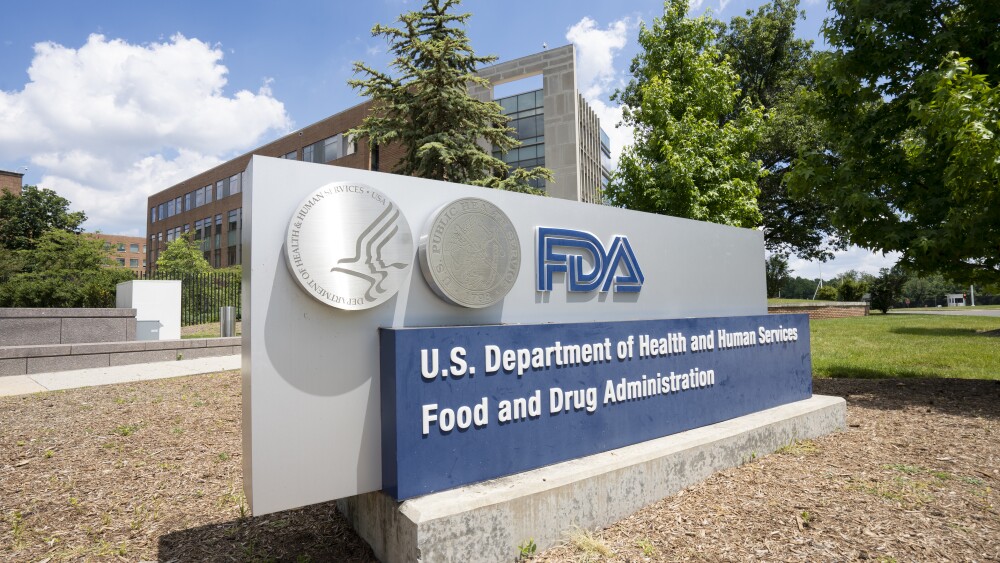Aside from the rare disease market, Novo Nordisk also scored a key regulatory win last month for its blockbuster GLP-1 drug Wegovy, which can now be used to treat patients with metabolic dysfunction-associated steatohepatitis.
August was a big month for the rare disease space, which saw four history-making approvals—though the streak was marred by one rejection. Also walking away with a win last month was Novo Nordisk, which secured a critical label expansion that, according to analysts, could help its blockbuster GLP-1 medication gain access to nearly $2 billion in added peak sales.
Read below for more.
Four Firsts for Rare Diseases
Company: Jazz Pharmaceuticals
Drug: Modeyso
Indication: Glioma
The first rare disease nod came on Aug. 6 for Jazz Pharmaceuticals’ dordaviprone, which was approved for patients aged 1 year and above with diffuse midline glioma with an H3 K27M mutation who have progressed after prior treatments. The drug, which will carry the brand name Modeyso, is the first systemic therapy for this specific type of glioma, according to the FDA’s announcement of the approval.
Modeyso was approved under the FDA’s accelerated pathway, supported by overall response (OR) data from a pair of Phase I and Phase II studies. According to Jazz’s news release announcing the approval, Modeyso achieved an OR of 22% in 50 adult and pediatric patients. Among responders, median duration was 10.3 months. To maintain Modeyso’s approval, Jazz is running a confirmatory Phase III trial that is expected to be complete in August 2026.
Company: Insmed
Drug: Brinsupri
Indication: Non-cystic fibrosis bronchiectasis
Not a week after Jazz, Insmed secured an FDA nod for brensocatib—now sold as Brinsupri—for the rare respiratory disorser non-cystic fibrosis bronchiectasis. Brinsupri, taken orally once daily, is indicated for patients aged 12 years and up. Insmed has set its price at $88,000 per year—“a little higher” than what analysts were expecting, Guggenheim Partners wrote at the time.
Brinsupri marks two firsts for the biopharma industry: Not only is it the first drug for bronchiectasis to reach the market, but it is also the first approved treatment that works by blocking DPP1, an enzyme that plays a role in activating the inflammatory response in airways.
Brinsupri is backed by data from the Phase III ASPEN trial. Data published in The New England Journal of Medicine in April showed that Brinsupri lowered the rate of pulmonary exacerbations by around 20% versus placebo. The Phase II WILLOW trial also supported Brinsupri’s approval, demonstrating a roughly 40% reduction in the risk of exacerbations relative to placebo.
Company: Precigen
Drug: Papzimeos
Indication: Recurrent respiratory papillomatosis
Then, on Aug. 14, Precigen won the FDA’s go-ahead for zopapogene imadenovec-drba, now named Papzimeos, for the treatment of recurrent respiratory papillomatosis (RRP). In its announcement of the approval, the FDA said Papzimeos is a “first-of-its-kind” non-replicating immunotherapy for this disease.
With around 1,000 new cases in the U.S. annually, RRP is a rare disease that manifests as benign tumors in the airways, leading to difficulties in swallowing and breathing. If left unchecked, RRP can lead to death. Papzimeos works by helping the body mount an immune response against cells infected by HPV 6 and HPV 11, both associated with RRP. Pivotal Phase I/II data supported Papzimeos’ approval, showing that the biologic elicited a complete response rate of more than 50% in treated patients, while over 85% needed fewer surgical interventions in the year after treatment.
Company: Ionis Pharmaceuticals
Drug: Dawnzera
Indication: Hereditary angioedema
Capping off the rare disease rally this month is Ionis Pharmaceuticals. On Aug. 22, the California biotech’s antisense oligonucleotide donidalorsen, now branded Dawnzera, became the industry’s first RNA-targeting prophylactic for hereditary angioedema (HAE). Patients 12 years and older can receive the therapy, which is given via a subcutaneous injection every four weeks.
Dawnzera targets the prekallikrein mRNA, causing its destruction. This, in turn, reduces overall levels of PKK, a protein that plays a role in swelling and pain attacks in HAE. Data from the OASIS-HAE study backed Thursday’s approval, demonstrating an 81% reduction in HAE attack rate versus placebo over 24 weeks of observation. Results were published May 2024 in the New England Journal of Medicine and additionally showed a significant improvement in patients’ quality of life.
Wegovy Win For Novo
On Aug. 15, the FDA gave the go-ahead for Novo Nordisk’s blockbuster injection Wegovy to be used in adults with metabolic dysfunction-associated steatohepatitis. The GLP-1 drug, indicated for patients with moderate to advanced liver scarring but without cirrhosis, should be used in conjunction with a reduced-calorie diet and higher physical activity.
Wegovy’s approval in MASH is a “step in the right direction” for Novo, analysts at BMO Capital Markets wrote in an Aug. 17 note to investors, adding that breaking into the MASH market “could start to help shift the momentum” for Wegovy, which in the first half of 2025 has been hit hard by the rise of compounders. BMO anticipates peak MASH sales of $1.9 billion for Wegovy.
Data from the Phase III ESSENCE trial, which supported the label expansion, showed that Wegovy improved liver fibrosis without worsening steatohepatitis in 37% of treated patients at 72 weeks, versus 22.5% in placebo comparitors. At the same time, Wegovy resolved steatohepatitis without worsening fibrosis in 62.9% of patients, as compared with 34.1% of placebo participants.
Wegovy has “clear efficacy in MASH,” the BMO analysts wrote, adding that its “clean safety profile and broad benefits across metabolic disease” could help establish the drug “as a backbone treatment for MASH.”
Wegovy joins Madrigal Pharmaceuticals’ Rezdiffra in the MASH space. Approved in March 2024, Rezdiffra made $180.1 million last year.
Three COVID-19 Vaccines Cleared, With Restrictions
The FDA on Aug. 27 approved updated COVID-19 vaccines from Pfizer, Moderna and Novavax, but with key limitations: The shots can only be used in adults 65 years and older and younger people who are at elevated risk of severe outcomes.
There are some minor differences across the three, particularly as it pertains to use in the at-risk younger population.
- Novavax’s Nuvaxovid, a protein-based shot, is authorized for individuals 12 through 64 years.
- Pfizer and BioNTech’s mRNA-based Comirnaty can be given to children as young as 5 years.
- Moderna’s mNEXSPIKE is indicated for people 12 through 64 years, while Spikevax is indicated for individuals 6 months through 64 years. Both vaccines are mRNA-based.
These approvals come after Health Secretary Robert F. Kennedy Jr. in May removed routine COVID-19 vaccination for healthy children and healthy pregnant women from CDC recommendations.
PTC Hit With Rejection in Friedreich’s Ataxia
The FDA on Aug. 19 turned down PTC Therapeutics’ vatiquinone, which the company has proposed for the treatment of Friedreich’s ataxia in children and adults.
In its complete response letter, the FDA stated that “substantial evidence of efficacy was not demonstrated” and that PTC would need an additional “adequate and well-controlled study” to support a resubmission. Matthew Klein, the company’s CEO, said in a statement at the time that PTC is planning to meet with the FDA to discuss potential next steps.
Vataquinone is a small molecule that blocks some of the cellular pathways that go awry in patients with frataxin mutations, the underlying cause of Friedreich’s ataxia. Patients with this rare neuromuscular disease suffer from loss of coordination and muscle strength, as well as difficulty speaking, swallowing and breathing. Around 25,000 patients have been diagnosed worldwide, according to PTC.
Vataquinone missed the mark in a Phase III, registration-directed trial back in 2023, failing to meet its primary endpoint of improving gait, stability and limb function after 72 weeks. PTC sought registration with the FDA based on secondary outcomes such as stability.






